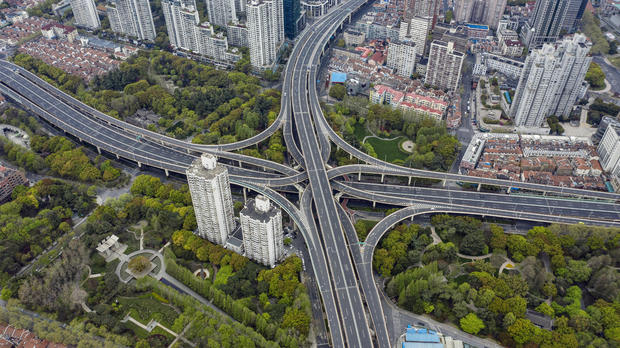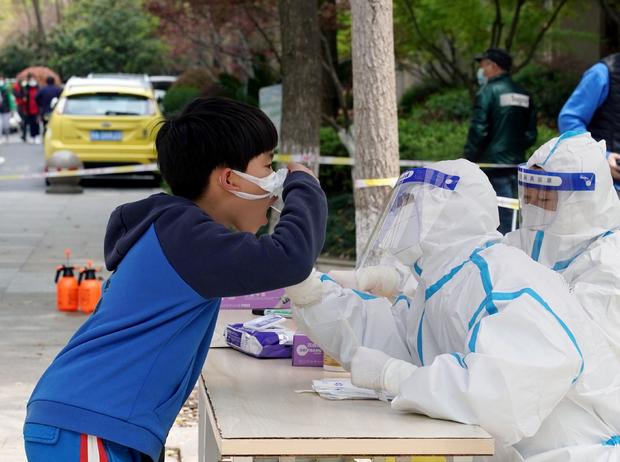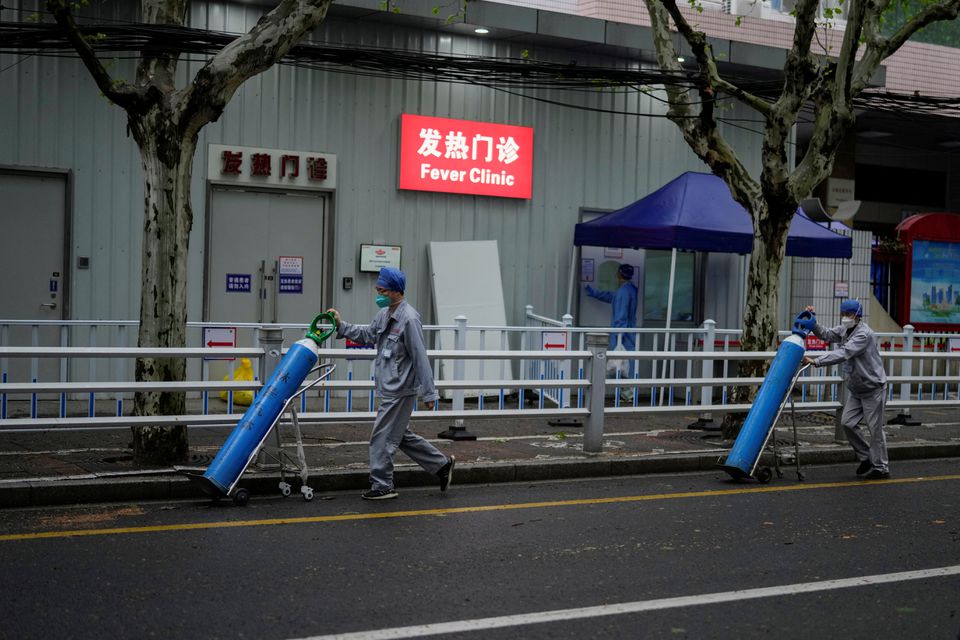Millions of people in Shanghai, China’s locked-down financial metropolis, have been anxiously seeking medical care and basic necessities such as food. Young children infected with Covid-19 were forcibly taken from their parents. And public outrage is growing, with no end in sight as China tightens its grip.
China has been battling its greatest Covid wave yet since March, with Shanghai currently being the epicenter. The city’s entire population of 25 million people is on lockdown, with national health care workers and the Chinese military dispatched to help with the response.
On Wednesday, the country had about 20,000 new cases, significantly beyond the peak of Wuhan in 2020, when the pandemic began.
Though this figure is still significantly lower than in many other nations, it represents a significant increase for China, which has implemented a comprehensive zero-Covid strategy that includes border restrictions, mass testing, quarantines, and strict lockdowns.
As newer, extremely contagious Covid strains continue to spread across the population, the policy’s long-term viability is being called into question.
What you need to know about the latest outbreak is listed below.
Cases began to rise in early March in a number of provinces across China, including Shandong in the east, Guangdong in the south, and Jilin in the northeast.
According to the National Health Commission, the virus had spread to 29 of China’s 31 provinces by the end of the month (NHC). Jilin and Shanghai, the two main hotspots, accounted for 90% of all cases reported in March.
In March, a number of cities with a combined population of more than 37 million people were placed under various levels of lockdown. By early April, several of the lockdowns had been lifted, leaving Shanghai as an exception, as officials fight to bring its cases under control.
Only two Covid deaths have been officially documented thus far during this wave, both of which occurred in March in Jilin.
How does it feel to be on lockdown?
As the situation worsened, Shanghai’s efforts were broadened and extended.
After denying for days that it had any preparations for a citywide lockdown, the administration declared on March 27 that it would implement a phased lockdown, beginning with one half of the city and then moving to the other.
By March 31, the government had abandoned its staggered strategy, effectively imposing a citywide lockdown on the city’s 25 million citizens, who were prohibited from leaving their homes unless to be tested.
Officials reported that obligatory citywide testing revealed a spike in cases, leading them to extend the lockdown until further notice.
According to state media and the People’s Liberation Army, more than 30,000 medics and 2,000 military personnel have been despatched to the city to enforce these restrictions and meet the requests of the entire locked-down populace.
However, the limits have sparked a rare outpouring of public outrage and criticism of the administration, with locals alleging difficulties obtaining basic necessities such as food and medicine.

On April 5, 2022, during a COVID-19 lockdown in Shanghai, China’s largest city and a global financial center, empty roads can be seen.
Anger grew last month after an off-duty Shanghai nurse died after being denied away from her own hospital’s emergency ward, which was closed for disinfection. Another Shanghai resident died at his home after suffering a medical emergency and not being able to go to the hospital in time.
One popular comment on the heavily regulated Chinese social media network Weibo stated, “We are not killed by Covid, but by the Covid control methods.”
Cleaning employees were recently photographed sleeping in a garage in a Shanghai neighborhood. After a public outcry and an online petition, all of the more than 40 workers were transported to quarantine motels on Wednesday night, according to a cleaning worker from the neighborhood.
There was also indignation over Shanghai’s policy of isolating all Covid-positive patients, including children and neonates, in facilities. One mother told CNN that she was removed from her infected 2-year-old daughter on March 29 and was not permitted to visit her kid in the isolation ward until a week later.
Shanghai health officials announced on Wednesday that the policy would be changed to allow parents who test negative to apply for permission to accompany Covid-positive children with “special needs,” though they did not specify what would qualify as “special needs.” Parents who test positive can also accompany their Covid-positive children in quarantine facilities.
The outbreak in Shanghai is also spreading to other parts of China. Two Shanghai tourists visited a shopping center in Hangzhou, a nearby city, on Tuesday. After they were eventually found to be positive, the mall was promptly closed, leaving nearly 2,000 people stranded inside for the night. Those two passengers have been detained pending the outcome of an official investigation.

On April 1, 2022, a medical worker in Shanghai’s Songjiang District takes a swab sample from a boy for a nucleic acid test.
What is the Spreading Variant?
This uptick has been fueled by Omicron, with identified instances displaying both BA.1 — the original Omicron — and offshoot lineages such as BA.1.1 and BA.2.
According to the World Health Organization and US health authorities, BA.2, which was initially discovered in January, is currently the primary cause of Covid-19 worldwide and the prevalent strain in the United States.
International case counts, which had been dropping since the first week of January, have started to rise again since then.
BA.2 appears to be significantly more contagious, according to studies, while the severity of this variant is still being researched. According to some epidemiologists, the fundamental reproduction number could be as high as 12, implying that each sick individual infects an average of 12 people.
That would put it on par with measles, another airborne disease. BA.1’s basic reproduction number is thought to be around 8.

Workers deliver oxygen cylinders outside a hospital in Shanghai, China, on April 14, 2022, during a lockdown due to the coronavirus disease (COVID-19) pandemic.
Will China maintain its zero-Covid policy?
Experts and international watchers have worried as the outbreak has progressed if this wave, the more transmissible type, and China’s huge immunization effort could bring zero-Covid to an end.
According to the NHC, more than 88 percent of the country’s 1.4 billion people have been fully vaccinated as of March 31.
Scientists and leaders had signaled that they were rethinking the policy before the outbreak, with one prominent epidemiologist posting on Weibo in early March that zero-Covid would “not remain unchanged forever.”
But that appears to be a long way off, with Chinese authorities making it plain that the alternative — the virus spreading across the country and potentially overloading the health system — is the worse choice.
According to the state-run newspaper Global Times, Wu Zunyou, chief epidemiologist of the Chinese Center for Disease Control and Prevention, said on Friday that China would “continue to emphasis on dynamic zero-Covid policy.” He noted that the relaxing of limitations and openness of borders observed in other nations could “create numerous difficulties,” including a “strain on” medical resources and an increase in mortality.
Vice Premier Sun Chunlan said in Shanghai on Monday that achieving zero-Covid would require “a more committed mindset, more strong actions, and more effective cooperation.”
